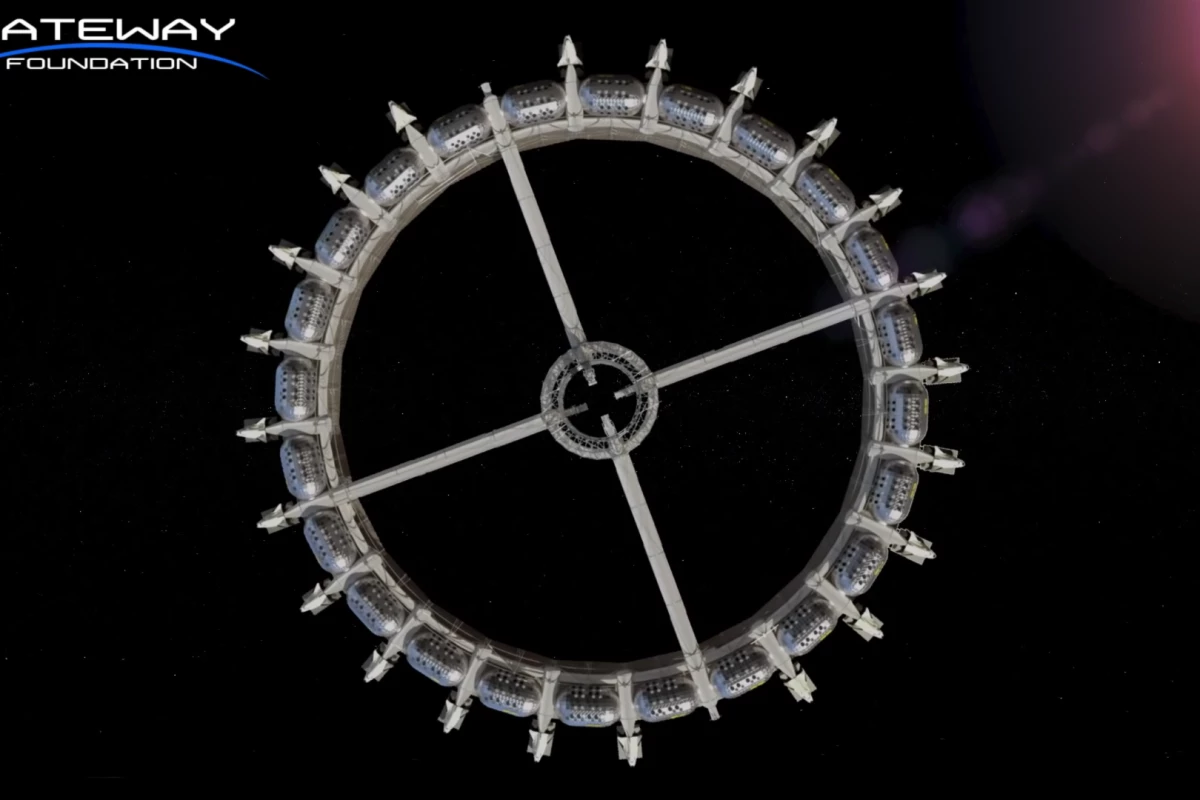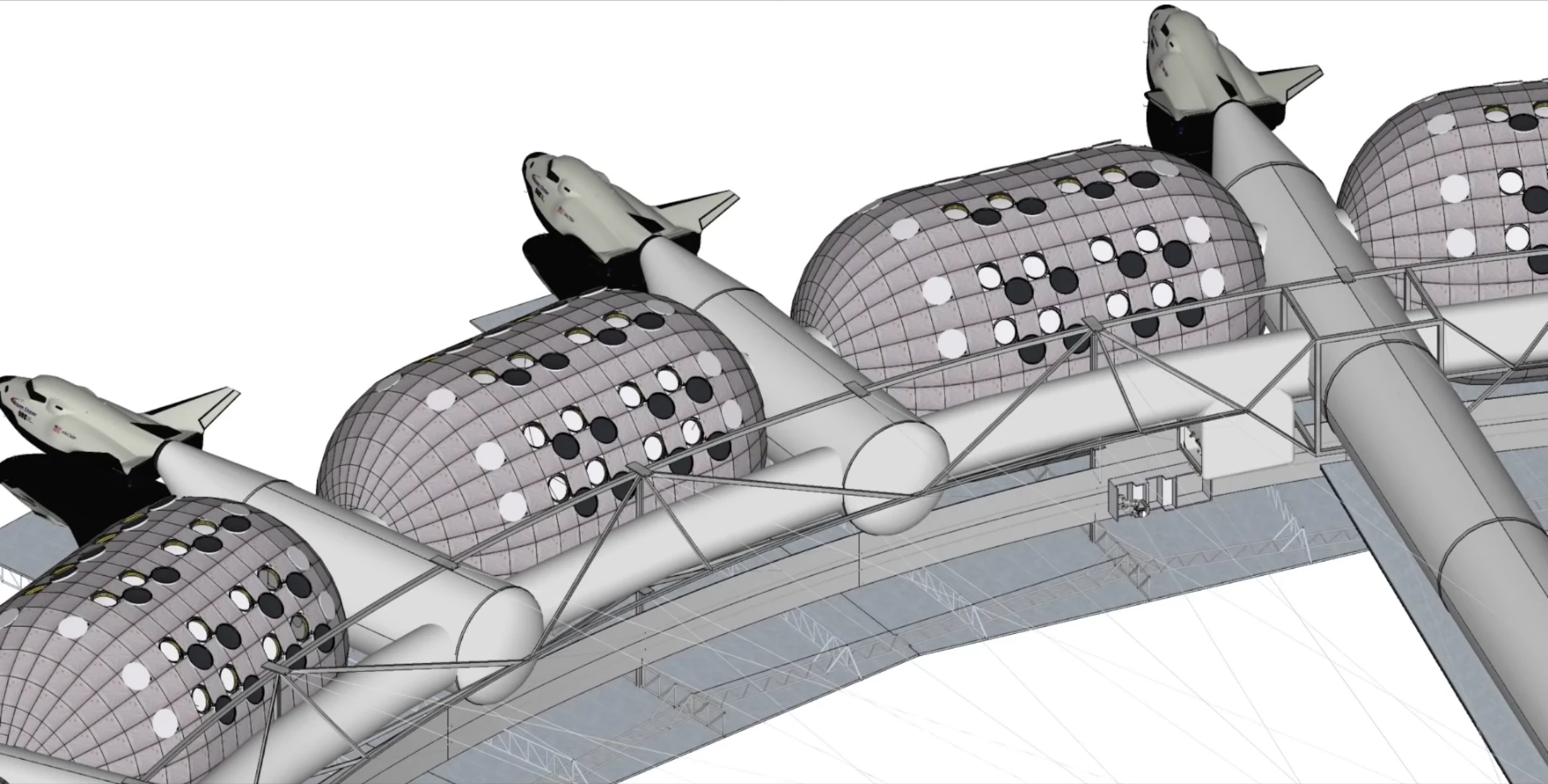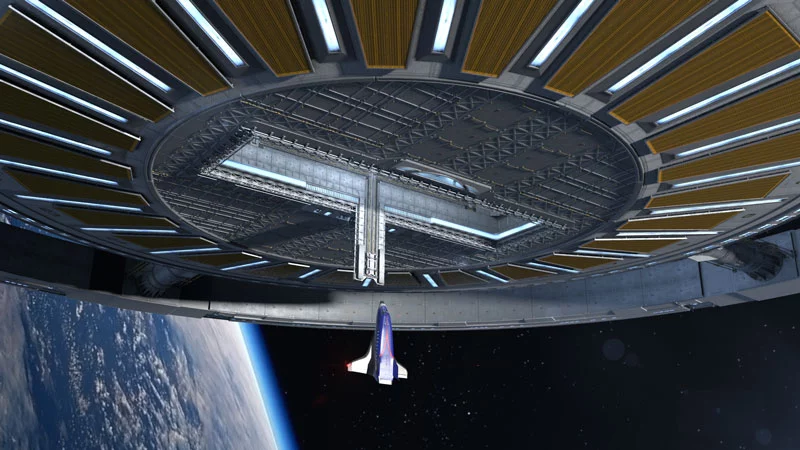The idea of using centrifugal force to create a sensation of gravity in space originated as early as 1903, but a group of space enthusiasts believes its time has come. Check out Gateway's vision for the Von Braun Rotating Space Station.
It's amazing to look back at the great minds of the past and marvel at their visions for the future. Russia's Konstantin Tsiolkovsky was writing science fiction right back in the late 1800s at the dawn of the gasoline engine era, and yet he was already dreaming of space travel and starting to solve problems that would arise if you sent humans off the planet.
One of these problems is the lack of gravity. Tsiolkovsky could only have guessed it at the time, but living in zero gravity plays absolute havoc on the human body. Astronaut Scott Kelly wrote a harrowing account last year of just how much of a mess he was when he came back to Earth after a year aboard the ISS. It's no joke, the body relies on gravity for everything from balance, circulation and vision to maintaining bone density and muscle mass. A year in space can just about wreck you.
Tsiolkovsky came up with the idea of a toroidal space station based on a hub-and-spokes design much like a bicycle wheel. If the wheel spins in space, then inertia and centrifugal force can create a kind of fake gravity, pulling things toward the outer circumference of the wheel. Instead of floating about losing bone density and muscle mass, people could walk on a floor just like they do back on planet Earth. Heck, you could speed it up, walk around in 2G for a few months, and come back to Earth a superman rippling with muscle.
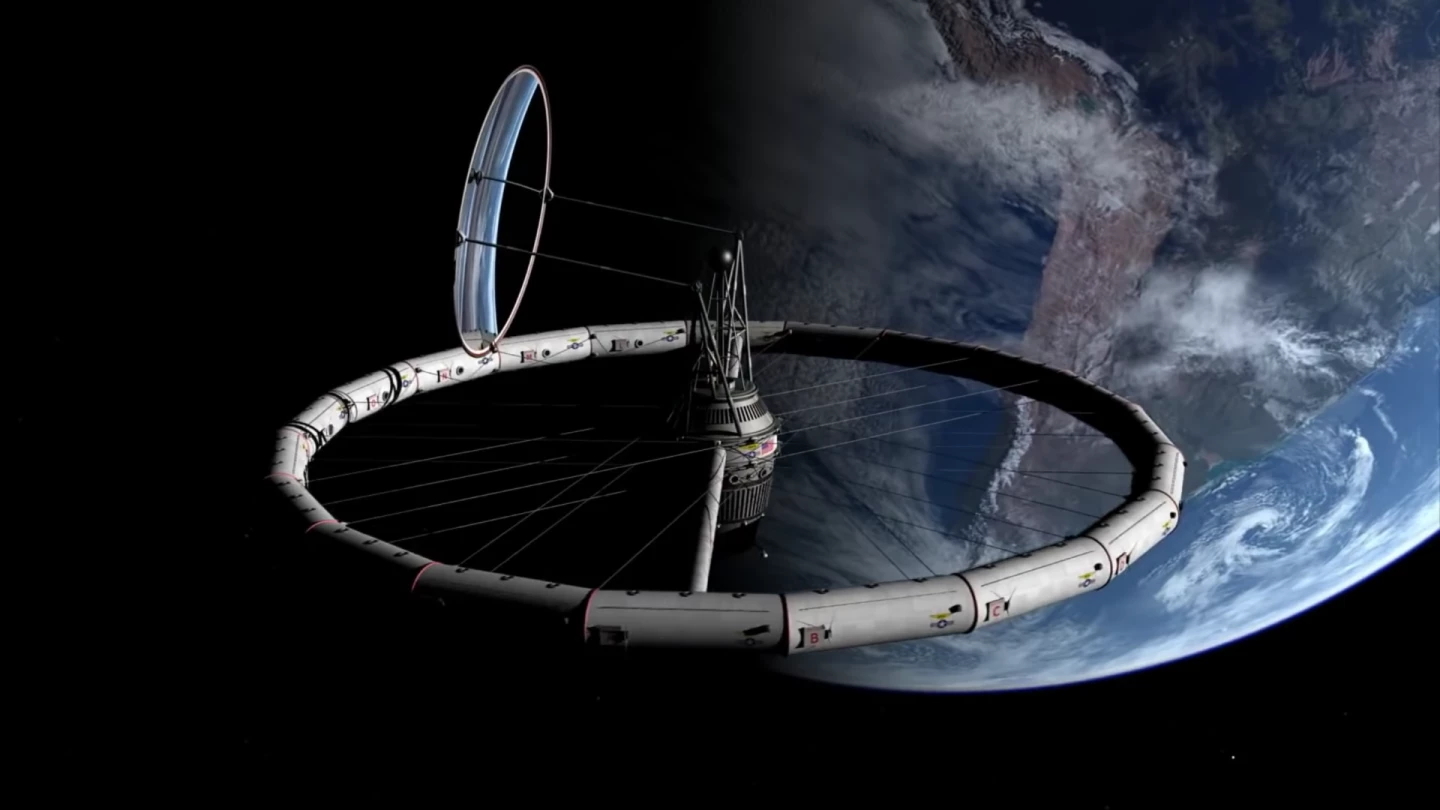
It was Wernher von Braun who popularized the idea as the space age kicked into gear in the 1950s. A Nazi rocket scientist and engineer who defected to America in 1945, von Braun went on to be a great asset for the American space program, and put a lot of engineering work into a toroidal rotating space station concept, 250 feet in diameter, which he considered would be a crucial building block necessary to get man onto the moon.
It wasn't necessary. Von Braun later became the first director of NASA's Marshall Space Flight Center, and oversaw the development of the Saturn rocket, which launched Armstrong and Aldrin on the Apollo 11 mission, as well as five other manned trips to the moon.
But as the space race begins to heat up again – this time as a competition between private companies rather than a Cold War vendetta between adversarial nations – a group called the Gateway Foundation believes now is the time for a toroidal space station.
The Gateway foundation is a collection of space enthusiasts headed up by president John Blincow, a commercial pilot and flying instructor. Its members include ex-Jet Propulsion Laboratory engineer/scientist Dr. Thomas Spilker, who has consulted to NASA on the Voyager, Cassini and Genesis missions, 30-year Jet Propulsion Laboratory engineer Robert Miyaki, and other specialists in IP law, energy and sustainability, journalism and 3D technical animation.
The latter has come in handy in the creation of a pretty nifty 25-minute video (which you can watch below) outlining the foundation's plans for what it's calling the von Braun Rotating Space Station.
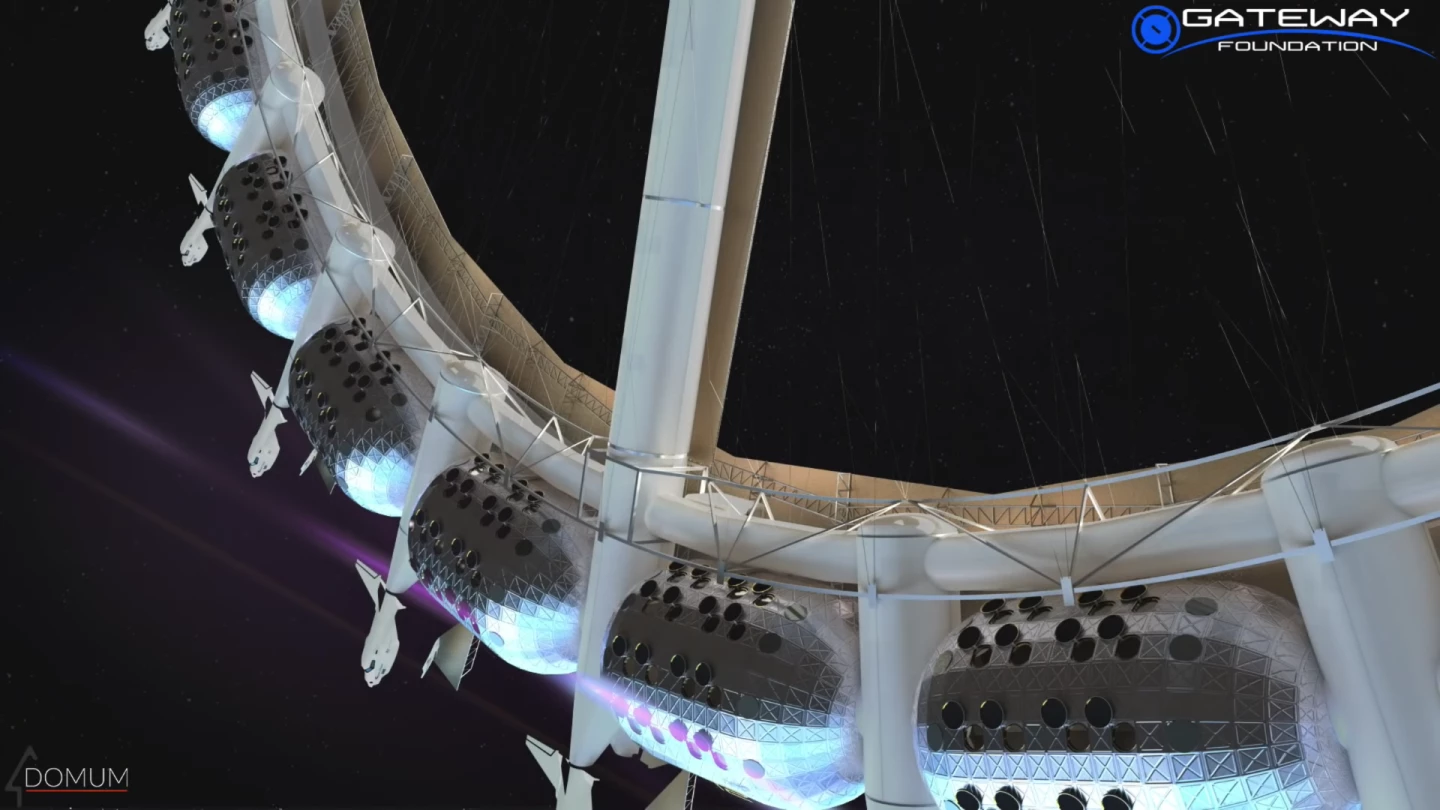
It's a hub-and-spoke design, not unlike a giant orbital ferris wheel, and develops on von Braun's design by placing a bunch of "habitation modules" around the outer ring, with a separate access tube so that you don't need to walk through everyone's modules to get where you're going. Modules are separated by extra transport tubes leading out to escape vehicles, so that everyone on the ring structure can evacuate quickly in an emergency.
Four elevator tubes take people and goods from the zero-gravity hub – which doubles as a dock for incoming space vehicles – out to the modules at the outer circumference. These modules can have more or less as much gravity as you feel like giving them, depending on how fast the station is spinning.
Gateway plans to construct the station in orbit, with pre-fabricated modules and sections sent up from the surface and assembled either by space-walking construction workers or by robotic devices.
The group wants to sell outer ring modules to national space agencies, private space companies, and whoever else has the cash to buy one – including "villa" modules for the ultra rich, and luxury hotel modules for space tourism.

A glorious vision, to be sure, but where will the money come from? Even without artificial gravity, the International Space Station has cost around US$150 billion to build and maintain between 1998 and 2015, making it probably the most expensive single thing ever built. Replacing it with a bigger, rotating von Braun design will cost a pretty penny.
And here's where the Gateway foundation's ideas seem to run up against a wall. To get it off the ground, the group hopes to leverage the power of the lottery: "Last year, lotteries in America created $70 Billion dollars, around the globe they generated over $300 billion dollars," reads the Gateway website. "To put that in perspective, that's twice what it cost to build the ISS – in one year. Imagine how spending might be affected if, in addition to a traditional large cash prize, the opportunity to go into space was also put on the table. Might that affect sales a bit?"
A global space holiday lottery, then. The foundation hopes lotteries and membership fees will be enough to start funding construction on the Von Braun station to the point where private and government money could start rolling in to help. It may be the greatest pie in the biggest sky we've ever seen.
Further to that, the Von Braun space station is really only conceived as a research platform, and a stepping stone toward what the foundation really wants to build: the Gateway itself, a rotating space city with a diameter of 488 meters (1600 ft) and a giant spacecraft parking deck to facilitate transfers between Earth-bound and lunar vehicles.
Props are due to the Gateway team for sallying forth on such a big task, but their presentation also leaves many questions unanswered. What does the Von Braun Rotating Space Station bring to the table, other than the ability to test varying levels of gravity and their effects on human and animal astronauts over the longer term? Is it really necessary to have such an expensive staging point between Earth and its moon, or Earth and Mars?
It seems likely today that rotating space stations will be part of humanity's future – as it seemed likely to Tsiolkovsky in the 1900s, and Herman Potocnik in the 1930s, and von Braun in the 1950s, and for that matter Stanley Kubrick in the late 60s when he used a toroidal rotating space station in 2001: a Space Odyssey. It didn't come to pass in these folks' lifetimes, and maybe it won't come to pass in the lifetimes of the Gateway team either, but perhaps some of their ideas will contribute to the pot that eventually serves the dish – and that's a worthy undertaking.
Enjoy the video below.
Source: Gateway Foundation
